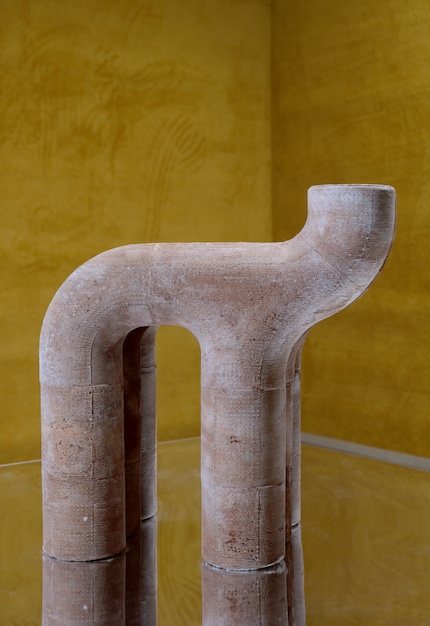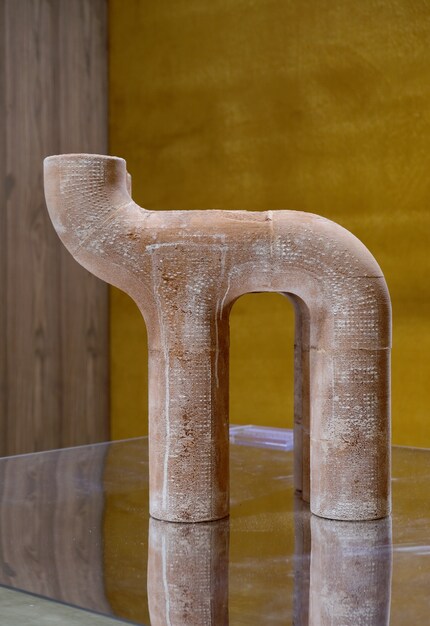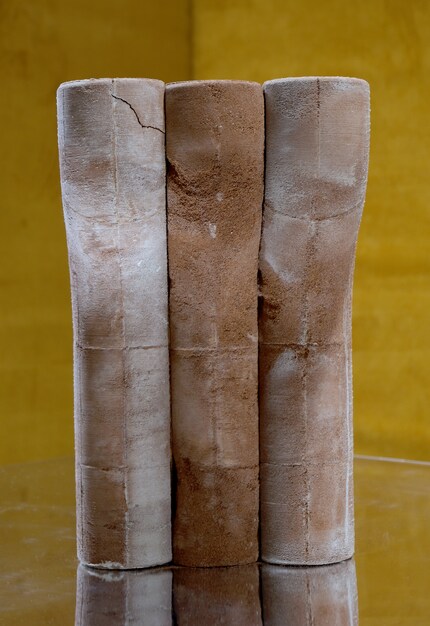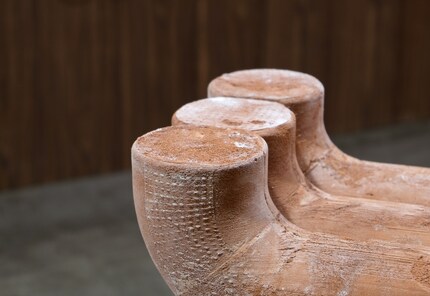What kind of waste material do you think the stool is made of?
Enter your response – you’ll find the solution just below.
- Brick82%
- Gravel5%
- Plaster13%
The competition has ended.

German young talents Julia Huhnholz and Friedrich Gerlach made a stool out of waste. Join the guessing game to find out which material they used.
In the course of their design studies at Bauhaus University Weimar, Julia Huhnholz and Friedrich Gerlach looked for more climate-neutral manufacturing processes for their product designs. After a long search and exchanges with three universities from Cape Town, Jena and Weimar, they found what they were looking for. With the help of the following clues, you may be able to guess which waste material they repurposed for their designer piece. I’ll reveal the correct answer at the bottom of the page.
The material in question is mostly found in construction and has a warm colour. It can be arranged in different ways and is used to divide rooms into different areas. It’s also used to cover things – unless the material’s shaped in the style popular in Roman times. If that’s the case, small round or square holes allow you to peek through.
Enter your response – you’ll find the solution just below.
The competition has ended.

Julia Huhnholz and Friedrich Gerlach processed granulated bricks to create a new type of solid. Biocement resembles conventional cement, but has a different composition and is produced in a different way. It doesn’t need to be baked and it emits less CO₂, as it’s produced with the help of a chemical bacterial solution. Producing cement, on the other hand, requires large amounts of heat, consumes energy and emits carbon dioxide during the chemical reaction in the kiln. Sand is generally used to produce cement and concrete. However, the designer duo decided against using this material, because it’s becoming increasingly scarce according to a UN report. Instead, they decided to give a second life to broken masonry and perforated bricks used in construction.
«Artificial limestone is a sustainable alternative to the conventional, mineral building material,» Friedrich says about their work. «As other studies have shown, even urea and the nutrients bacteria need can be collected from different waste streams. For example, from human urine or from by-products from cheesemaking.»


With their final thesis «The Essence of Biocement», Julia Huhnholz and Friedrich Gerlach took biocement out of the lab to explore its potential to create design pieces. The stool («Biocement Chair») is the first prototype of its kind made of biocement. It consists of three elements made with individual 3D-printed shells that were later assembled. «We are seeing it as an object of knowledge making research accessible through design,» Julia says in a short video that provides glimpses of the production process.

This is the ninth instalment of the «Guess what?» series, in which you can use my clues to guess a design piece’s «secret ingredient».
Header image: Pia SeidelLike a cheerleader, I love celebrating good design and bringing you closer to everything furniture- and interior design- related. I regularly curate simple yet sophisticated interior ideas, report on trends and interview creative minds about their work.